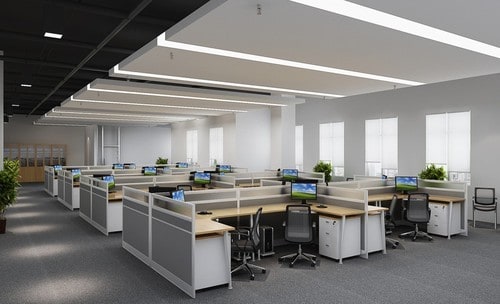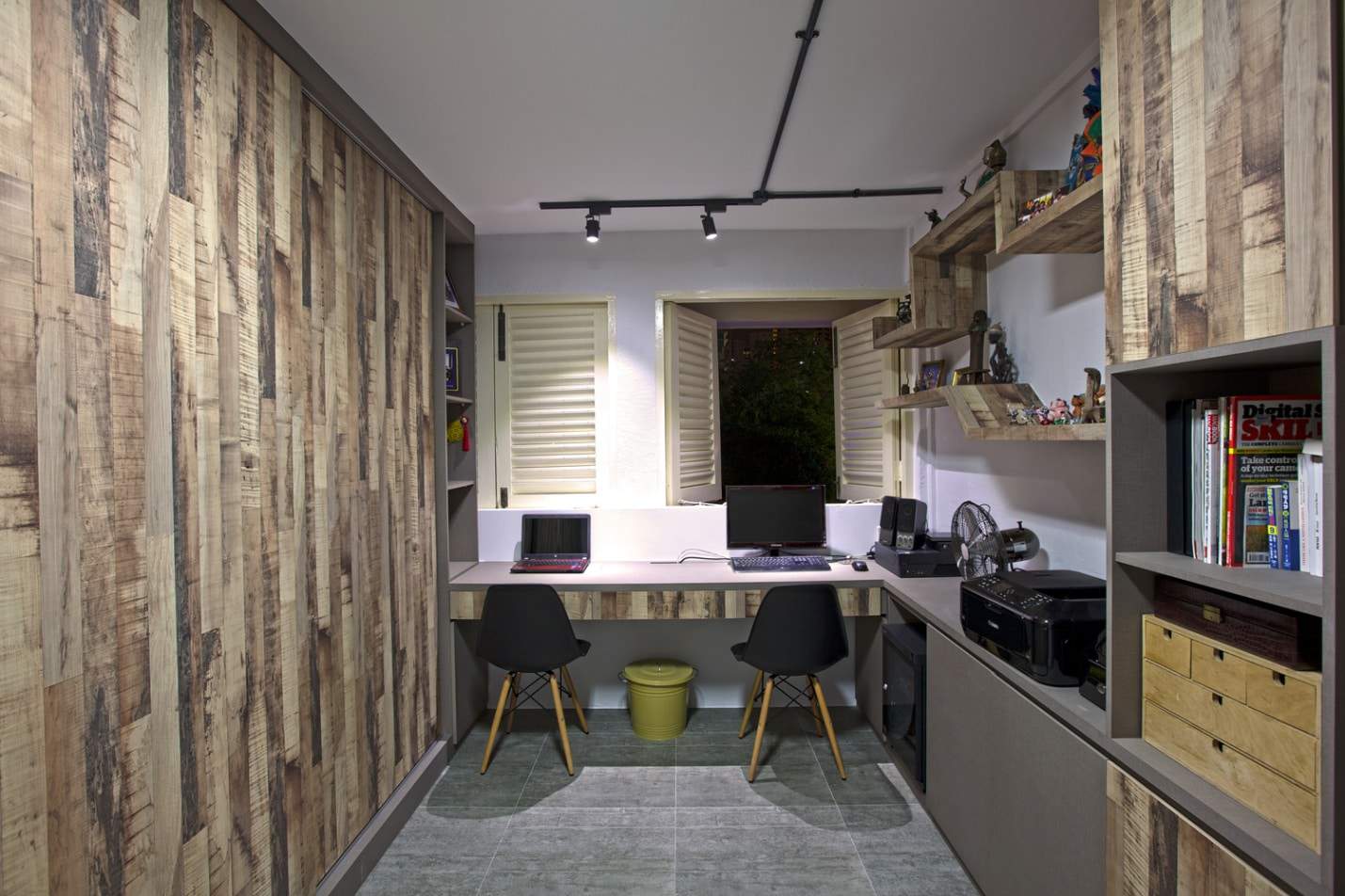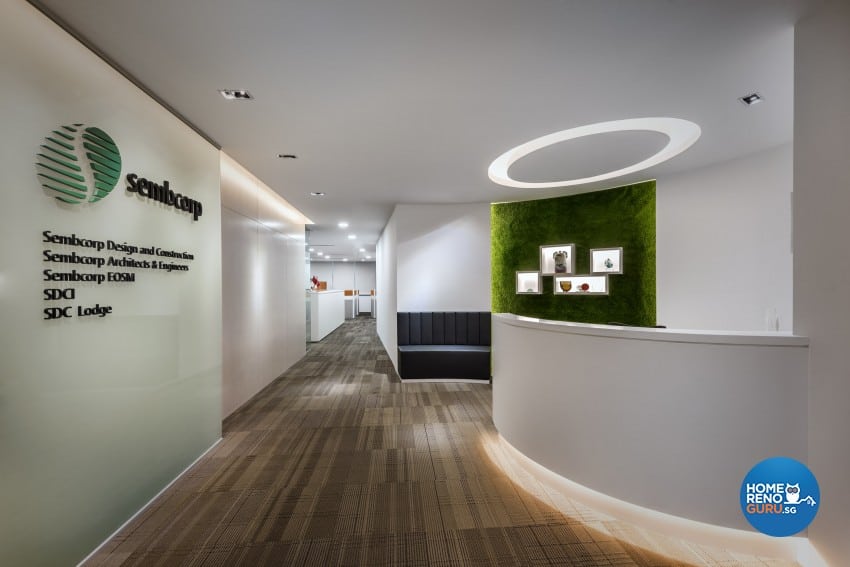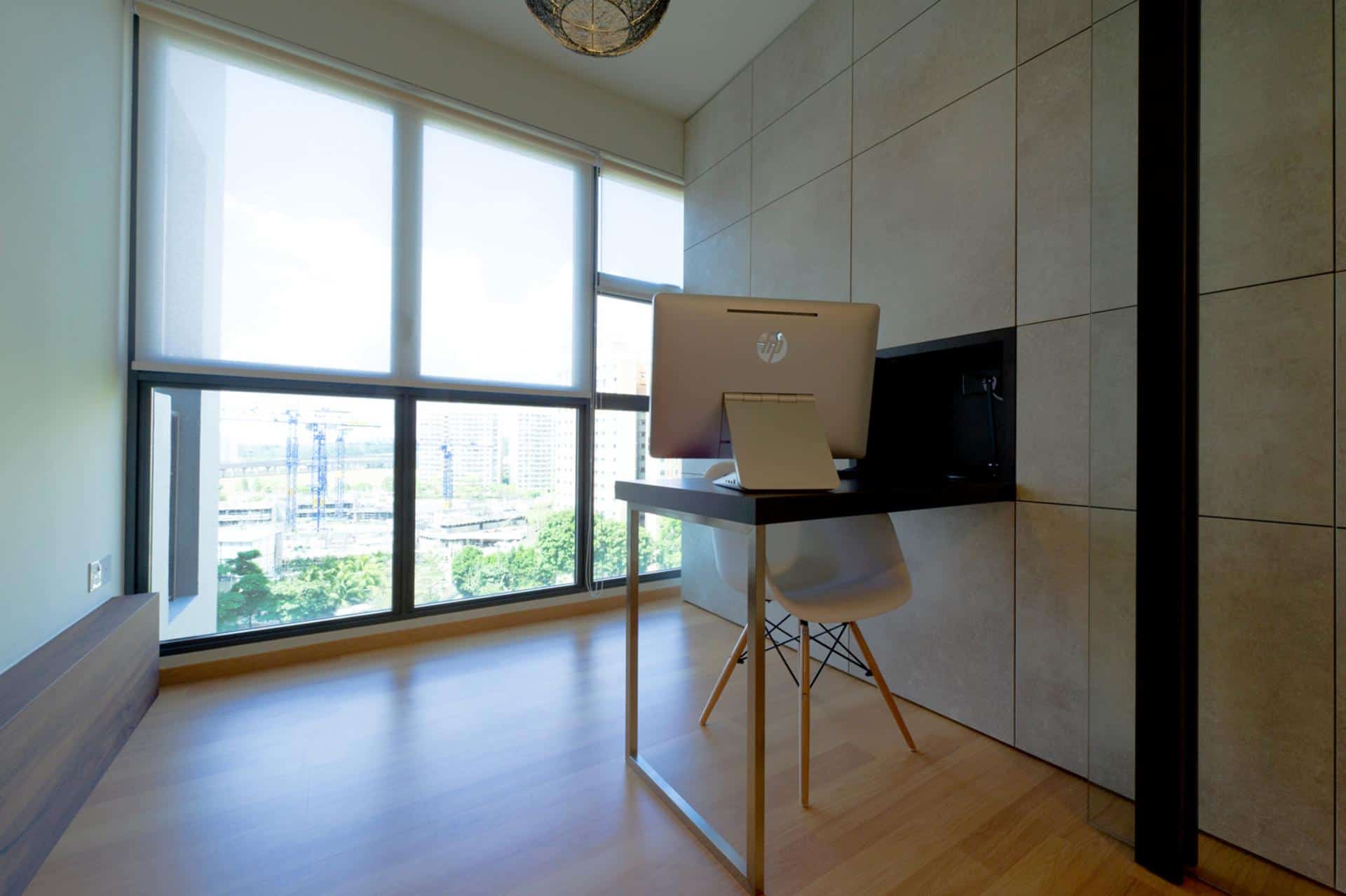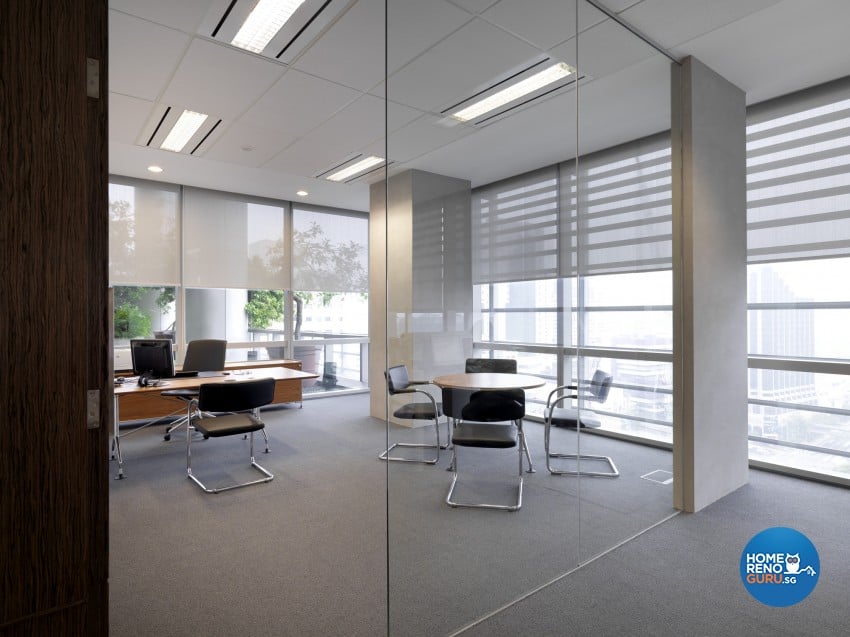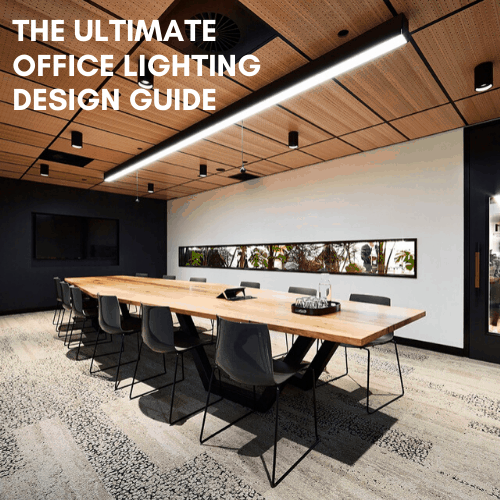
Image Credit: Office Lovin
Got a new office and wondering how to do up lighting design for the space? No idea how to go about designing lighting layout for an office space? Fret not! Here is the ultimate guide to office lighting design!
As you may know, a large proportion of the Singapore workforce work in offices, and spend a good 9-12 hours per day in offices. We are basically spending a large chunk of our day on our seats, surrounded by the four corners of the office; effectively this makes the office our second home – hence it is important to get office lighting design right.
As a person, you would want to spend your time on a comfortable and accommodating place. As an employee, your job is to be productive and deliver the required output. For both purposes, you expect your office to be the right environment so you can achieve efficiency, effectiveness, and have high morale.
Good lighting plays a crucial role in the office. Often times neglected, making sure the office is well lit can be a game changer both for the employer and the employee. Office lighting serves its main function of illumination while also contributing to interior design. Let’s dive in as we share more on office lighting design standards, ideas, and tips to have a well-lit working environment.
Office Lighting Design Standards
Let’s start things off with the standards of office lighting. In 2008, the Singapore Standards Council released the updated SS 531:2008 (2016).
SS 531, otherwise known as the Singapore Standard Code of Practice for Lighting of Work Places, covers various guidelines including indoor lighting. The code recognized three roles of lighting – visual, emotional, and biological. The visual role focuses on performance of workers with multiple tasks in an environment, over time. The emotional role is geared towards long term impression of workers on a workspace, and lastly, the biological role is to influence biological rhythm of those involved. More specifically, the following are the objectives of the code:
- Improve concentration, safety, and productivity
- Promote well being, mood, and health
- Help ageing people perform better
- Support healing process at healthcare facilities
- Help prevent possible problems from irregular work-hours
When the government sets a code or regulation, this goes to show that the topic is taken seriously. That’s why office lighting should not be taken lightly.
Image Credit: Open Sourced Workplace
Recommended Lighting Levels
SS 531
SS 531 has lighting recommendations depending on the indoor activity required. These recommendations are in illuminance. First of all, what is illuminance? Illuminance is the amount of light that touches a surface. In an office, it’s the amount of light touching the desks, or the conference table. In a gymnasium, it’s the amount of light hitting the floor.
Illuminance is measured by the unit of measurement foot-candle, or lux in meters. One Foot Candle is the amount of light hitting a 1 square foot surface when 1 lumen is shined from 1 foot away. On the other hand, 1 lux is the amount of light hitting a 1 square meter surface when 1 lumen is shined from a meter away.
SS 531 recommends the following:
- Filing, Copying – 300 Lux
- Writing, Reading, Data Processing – 500 lux
- Technical Drawings – 750 lux
- CAD Work Stations – 500 lux
- Conference and Meeting Rooms – 500 lux
- Reception Desk – 300 Lux
- Archive Room – 200 Lux
In general, low contrast and detailed tasks require more light while high contrast and less detailed tasks require less light.
Take note of the difference in recommended lux levels between technical drawings and CAD Work Stations. Although drawing is the main essence of both works, technical drawing rooms require higher lux than CAD Work Stations. This is because the latter involves work on the computer while the former is more on manual labor.
In Singapore where the Retirement and Re-employment Act exists, the age of employees should also be considered. Elderly people could require more than the recommended lux levels, especially if higher levels of visual performance is required from them. If the norm is 500 lux, their requirement could reach as high as 1000 lux.
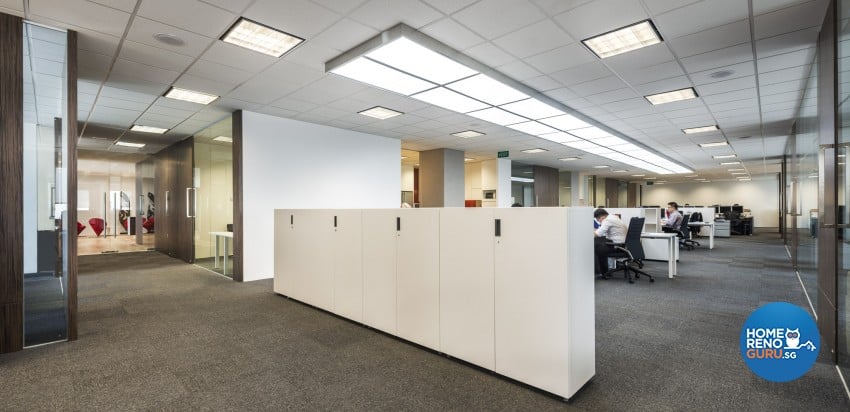
Image Credit: Home Reno Guru, Image Creative Design Pte Ltd
Basic Computation for Lighting Fixture Levels
Now that you have the recommended lighting level for your workplace, you might be wondering what it is for. In the end, what you need is the number of lighting fixtures and its corresponding type of lighting fixture.
For example, the dimensions of your conference room are 5mx4m (LxW). You’re also fixed on using a 10W LED for your room. Given this, you have to go to your local hardware or search on the Internet the equivalent lumens output of your light of choice. For example for a 10W LED, the equivalent lumens may be 1000lm. The conference room as mentioned below will be requiring 500lux. Using the formula below:
Number of Fixtures = (lux level*area)/lumens per fixture
Given:
Area = 5*4 = 20sqm
Lux level = 500lux (for conference rooms)
Lumens per fixture = 1000lm
Solution:
Number of Fixtures = (500*20)/1000
Number of Fixtures = 10
Hence, for a conference room of 20sqm, more or less 10 pcs of 10W LED will be required.
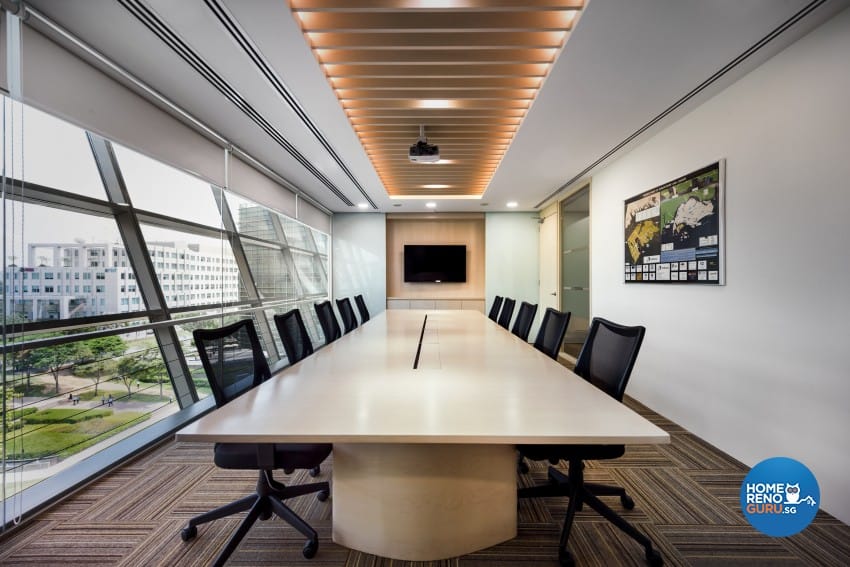
Image Credit: Home Reno Guru, Image Creative Design Pte Ltd
Choosing the Right Lighting For Your Office
Types of Lighting for your Office
There are three types of lighting that you should know – ambient lighting, task lighting, and accent lighting. All three should be found in an office for a better environment.
Ambient Lighting is the most basic type of lighting. It is the main source of light and illuminates the whole space uniformly. In order to create ambient lighting, recessed lights, pendant lamps, wall lamps, and the basic T8 Light tubes are used. In an office setting, daylight or cool-white light is recommended for ambient lighting.
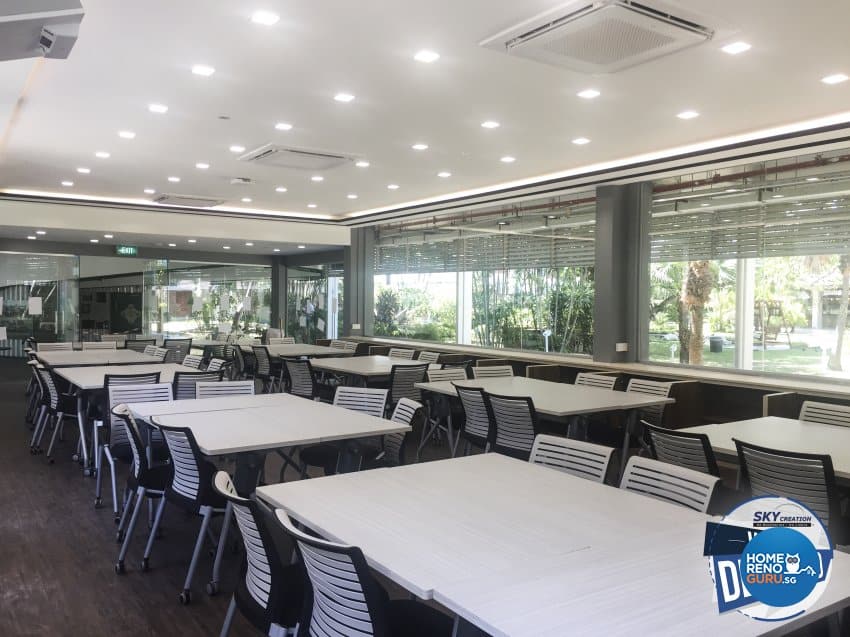
Image Credit: Home Reno Guru, Sky Creation
Task lighting, from the word itself, is used in the office to complete a task. It should be direct, intense and focused on the area where the task is being accomplished. It is expected to enhance visibility and help in lessening chances of eye strain. Typing, drafting, plan reading, research related responsibilities, and the like, are the activities usually needing task lighting in the office. Recessed lights, track lights, pendant lights, led strips, and vanity lights are the usual lightings used for task lighting.
Image Credit: Renopedia, Northwest Interior
Accent Lighting is done primarily to get the attention of people and focus it on a certain part of a room. Although it is usually expected just to provide design and style, accent lighting can actually be very helpful in the workplace. Accent lighting will not only improve the mood of an employee, but it also has the ability to boost morale. A visually pleasing office can make anyone feel good at work. Wall lights, track lights, and recessed lights all provide accent lighting.
Image Credit: Home Reno Guru, Image Creative Design PTE LTD
Lighting Amounts
The right amount of light is crucial when aiming for the right lighting for your office. Insufficient lighting can make the room dull. This can lead to feeling down or sleepy and you wont be able to function correctly at work. Also, eye strain may also be acquired. On the other hand, too much light can cause headache and sometimes eye strain too. There should also be presence of natural lighting when possible.
Image Credit: Renopedia, Dyel Design
Lighting Designs
Design wise, there are many options to choose from in Singapore. For pendant lights, ceiling lights, wall lamps, and other lighting accessories, you can check out the list of our products here. You should also opt for energy saving bulbs like LEDs to reduce electricity consumption.
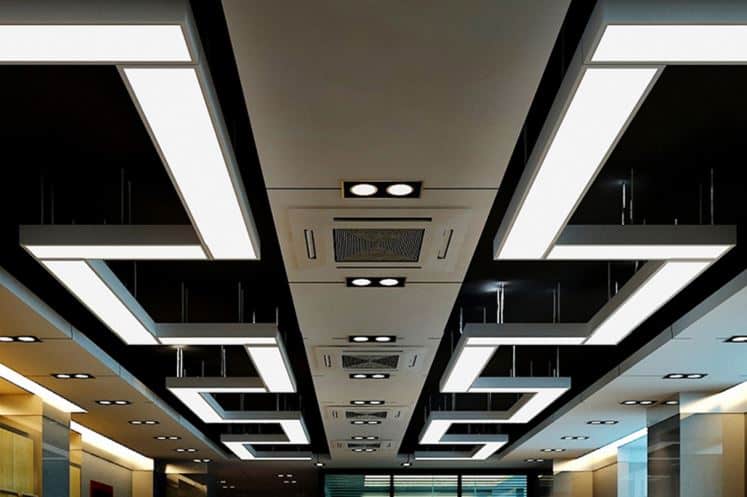
Shop Here: Recteana Wide Linear Rectangular Hanging Lamp
Light Positioning
There are lights for the ceiling, floor, and walls. Whatever purpose it may serve, there is a light for it. In offices, there may be a need to have more than one type of light needed since there could be multiple things done at different parts.
Lighting Office Sections
Most offices are made up of different parts- reception, conference rooms, open offices, private offices, and more. Every part requires different lighting. Always refer to the code for the required lux per room. You should also consider the activities done in each room.
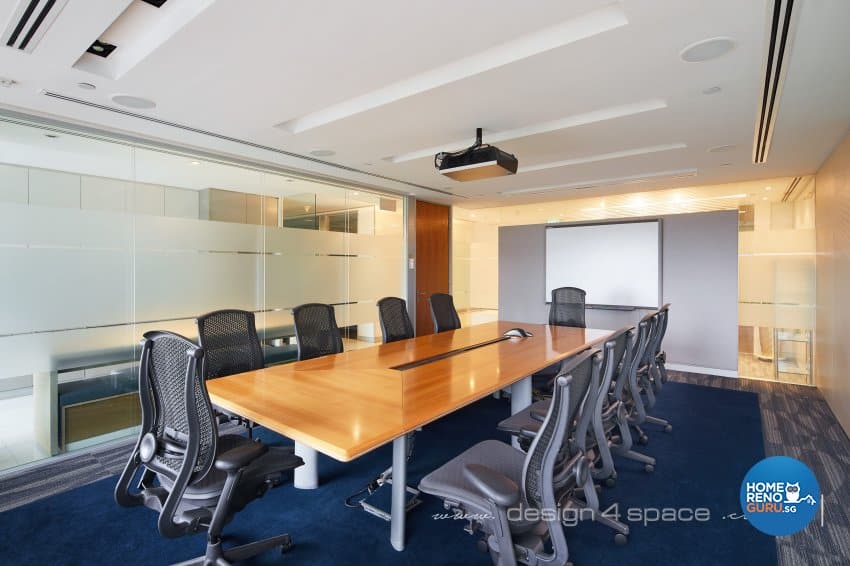
Image Credit: Home Reno Guru, Design 4 Space
Office LED Lighting
Unlike fluorescent bulbs, the efficiency of LEDs are not hampered by the size or shape of the lighting fixture. The following are other advantages of using LEDs
- Longer lifetime
- Energy efficient
- Loses brightness than burning out immediately
- less heat generated
- less maintenance required
- more color choices
- warms up very quickly
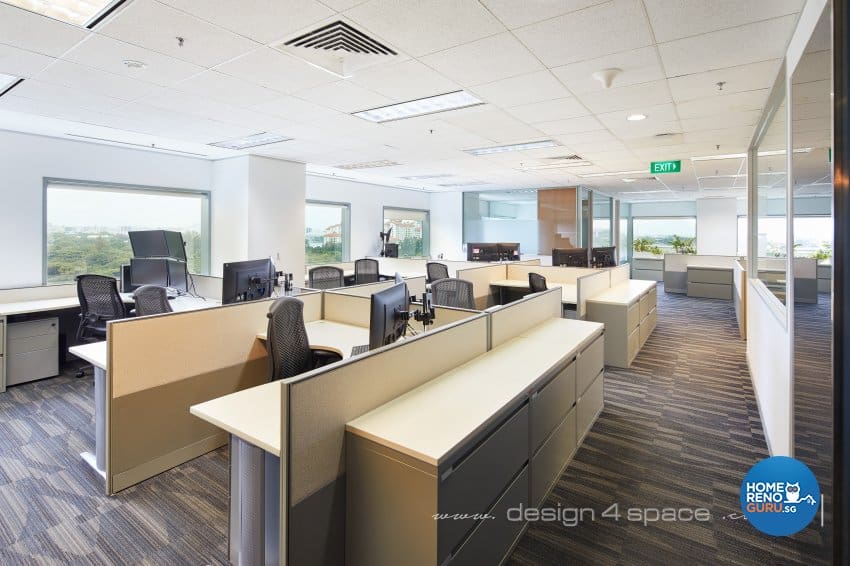
Image Credit: Home Reno Guru, Design 4 Space
T5, and T8 LEDs
T5 and T8 lights have been around for a while. With the emergence of LEDs, these two have been reconfigured and are now called LED tubes. Regular T5s and T8s are still available in some countries like Singapore. However, it is generally discouraged, and we recommend LED too given higher energy efficiency and hence lower electricity consumption and lower costs.
Just as an interesting note in case you’re wondering, the T in T5 and T8 stands for tubular, while the numbers 5, and 8 represent the diameter of the tubes in eights of an inch – T5 is 5/8 inch in diameter, T8 is 1 inch in diameter.
In the early 80’s up to the late 2000’s, the use of fluorescent T5 and T8 lights were so rampant. It was cheap and looked just fine with surface fluorescent parabolic housings as its casing. However, with the increased and stricter regulations on energy efficiency in Singapore, the use of fluorescent T5 and T8 in is rapidly becoming obsolete. This has given a problem to long established companies not looking into remodeling their offices just yet.
Image Credit: Home Reno Guru, Image Creative Design PTE LTD
This is where the importance of newer T5 and T8 LED tubes comes into play. With no major renovation needed, even old fittings can be rewired to retrofit LED tubes into the old fittings – but really in our opinion, given the fittings themselves are inexpensive now, you could really consider just changing them up. The cost of LEDs has dropped a lot over the years since 10 years back.
T5 LED lights are commonly installed in facilities such as laboratories and factories, where light is concentrated and high lumens are required. T8 LED lights on the other hand are more commonly used and becoming the standard of LED tubes. This is evident by its heavy usage in supermarkets, hotels, malls, and of course, offices. T8 LED lights produce wider beam angles and lower lumens making it preferred in most settings. If you’re looking for basic ambient lighting and you’re on a tight budget, you can still opt for T8 lights.
Lighting Ideas to Brighten Up Your Office
Cove Lighting
Cove Lighting doesn’t only provide an intimate and cozy feel, but it is also one of the most visually pleasing lighting techniques around. If you have a reception area, better have cove lightings to impress your guests or prospective clients.
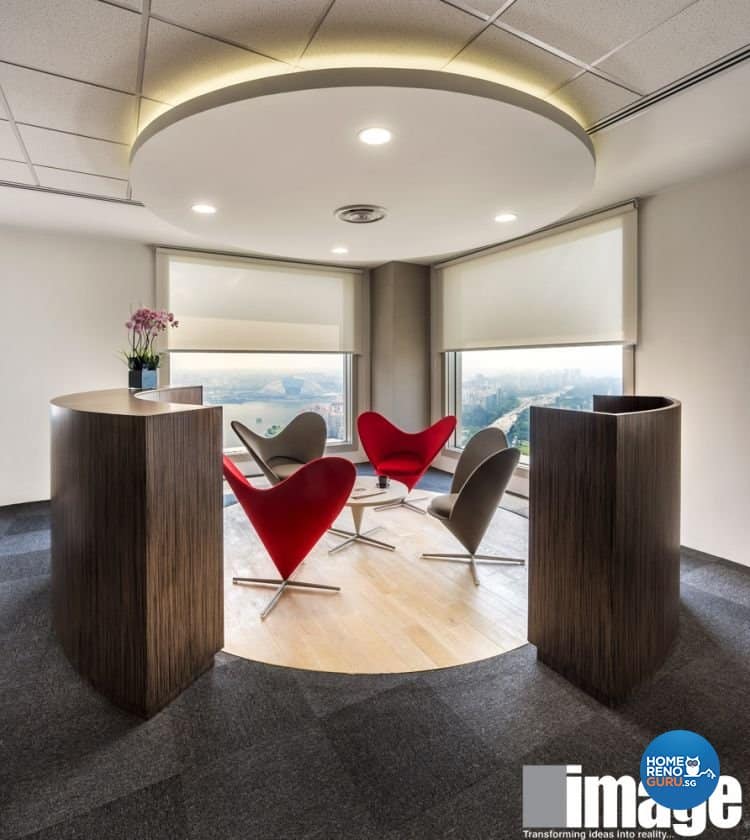
Image Credit: Home Reno Guru, Image Creative Design PTE LTD
Aesthetically Pleasing Table Lamps
Task lighting as mentioned earlier is an important facet of office lighting. If you’re providing table lamps, why not go with nice table lamps which fits into the overall interior design theme, and serve as a design focal point? There are a multitude of designer table lamps nowadays after all.
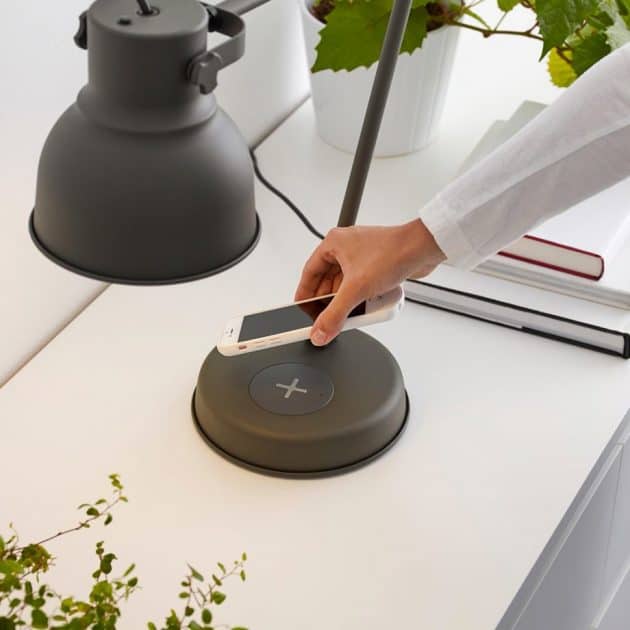
Image Credit: Architecture Design
Fix a Task Light to the Wall For Some Space Saving
To provide a better working table and more work space, wall attached lamps are highly recommended. Instead of a lamp occupying a space on the table, you could replace it with a flower vase or just leave it as it is for more space for work related items.
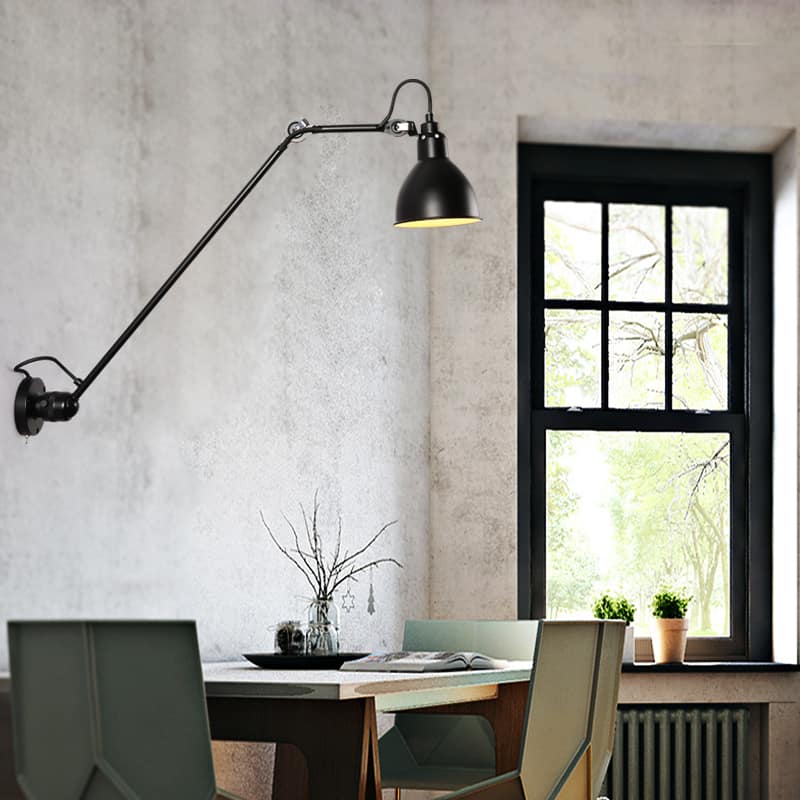
Get this here: Pandani Long Arm Wall Lamp
Conclusion
Getting the right lighting for your office is not a hard task. You just have to be aware of what to do and what not to do. But it does not stop there. Now that you are fully equipped with lighting standards and ideas for your office, you may now implement it to achieve optimum performance in your workplace.
